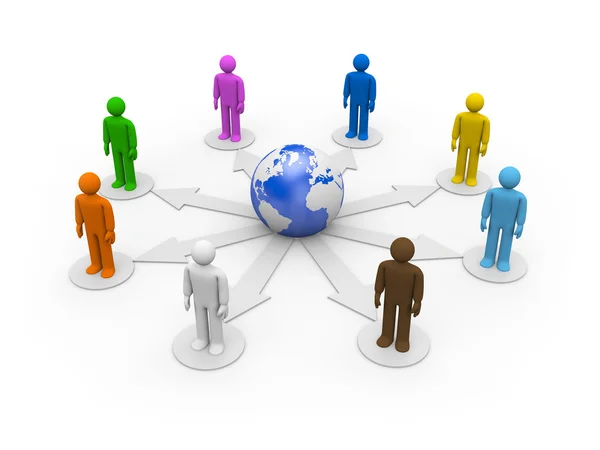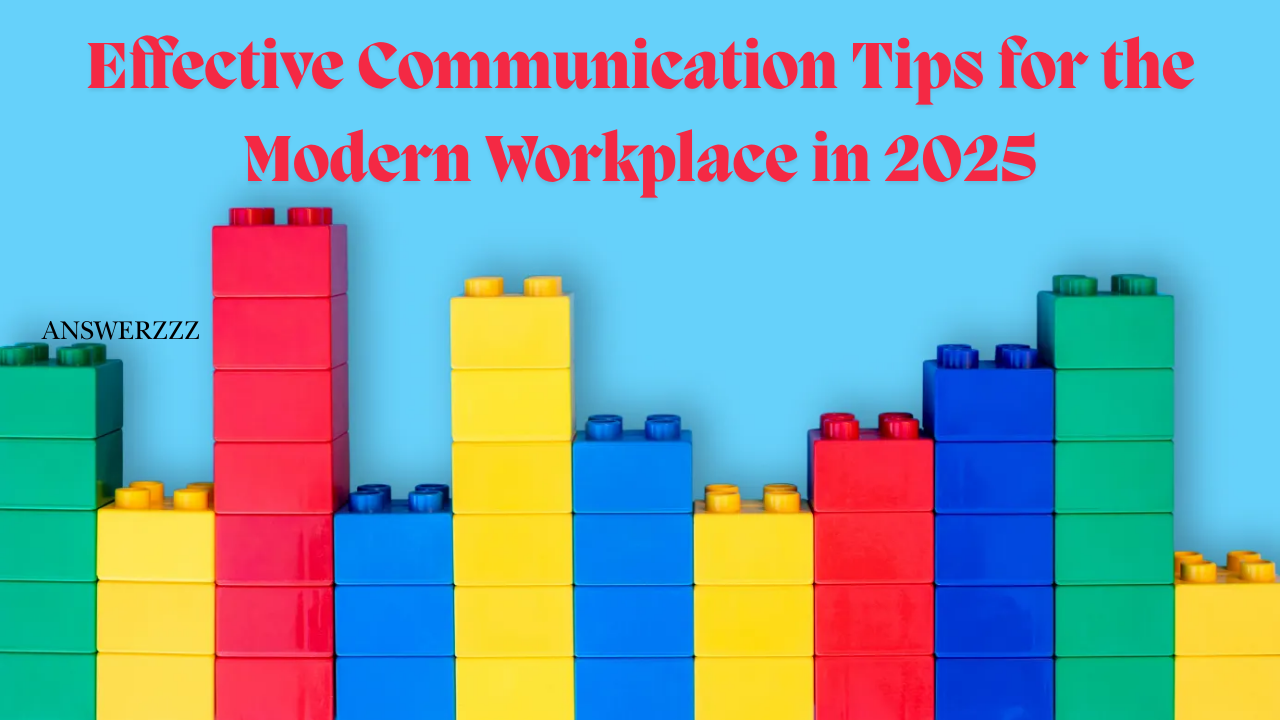In 2025, the landscape of workplace communication is evolving rapidly, driven by advancements in technology, the growing prevalence of remote and hybrid work models, and shifting cultural expectations. Effective communication in this modern era is more crucial than ever, as it fosters collaboration, enhances productivity, and builds stronger relationships among team members. Whether you are working in an office, remotely, or in a hybrid environment, understanding and implementing effective communication strategies can make a significant difference in your professional interactions. Here are some practical tips for mastering communication in the modern workplace of 2025.
1. Embrace Hybrid Communication Models
With the rise of hybrid work arrangements, where employees split their time between the office and remote locations, it’s essential to develop a communication strategy that caters to both in-person and virtual participants. This involves:
- Establishing Clear Channels: Define which platforms are used for what purposes. For instance, Slack or Microsoft Teams for quick updates, Zoom or Google Meet for meetings, and email for formal communications.
- Prioritizing Inclusivity: Ensure remote participants feel as involved as those in the office by using technology that supports hybrid communication, such as high-quality video conferencing tools and shared digital whiteboards.
- Implementing Regular Check-ins: Schedule regular meetings or brief check-ins to keep everyone aligned, especially when team members are working from different locations.
Tip:
Encourage team members to have their cameras on during virtual meetings to foster a more personal connection and enhance engagement.
2. Leverage Technology Wisely
The communication tools available in 2025 are more sophisticated than ever before, but it’s important to use them effectively:
- Utilize AI-Powered Assistants: Many communication platforms now include AI features that can help summarize meetings, track action items, and even suggest responses based on the context of the conversation.
- Integrate Tools for Seamless Workflow: Make use of integrations between your communication apps and project management tools like Asana, Trello, or Notion to keep conversations focused and tasks on track.
- Be Mindful of Overcommunication: With so many tools at our disposal, it’s easy to overwhelm colleagues with constant messages. Establish guidelines around response times and message urgency to avoid burnout.
Tip:
Take advantage of scheduling features and “do not disturb” settings to manage your availability and minimize interruptions during focused work time.
3. Focus on Clarity and Brevity
In a fast-paced work environment, getting your message across clearly and concisely is essential:
- Avoid Jargon: While industry-specific terms might be understood by some, they can alienate others. Use plain language whenever possible.
- Be Direct and Precise: State your main point early in the message to avoid confusion. Use bullet points or numbered lists to break down information for easy reading.
- Check for Understanding: Instead of assuming the recipient understood your message, ask for confirmation or encourage questions.
Tip:
End emails or messages with a summary or a clear call to action, such as “Please review this document and provide feedback by Friday.”
4. Cultivate Active Listening
Effective communication is a two-way street, and active listening is a crucial component:
- Give Full Attention: Whether in a meeting or a one-on-one conversation, eliminate distractions and focus on the speaker.
- Acknowledge and Clarify: Show that you are listening by nodding, making eye contact (virtually or in-person), and asking clarifying questions if needed.
- Reflect and Respond Thoughtfully: Paraphrase what the speaker has said to ensure you understood correctly before responding. This can prevent miscommunication and show that you value their input.
Tip:
During virtual meetings, use reactions or emojis to indicate your engagement, such as a thumbs-up for agreement or a question mark for clarification.
5. Adapt to Diverse Communication Styles

In 2025, the workplace will be more diverse than ever, with employees from different cultural backgrounds and generations. Understanding and adapting to various communication preferences is key:
- Be Aware of Cultural Differences: Some cultures value direct communication, while others may prefer a more nuanced approach. Be sensitive to these differences and adjust your style accordingly.
- Consider Generational Preferences: While younger employees may prefer quick, informal chats, older team members might favour detailed emails. Strive to balance these preferences in your communication strategy.
- Promote Inclusivity: Use inclusive language and avoid making assumptions about your colleagues’ backgrounds or preferences.
Tip:
Offer multiple ways for employees to provide input or feedback, such as through anonymous surveys, direct messaging, or open discussions, to accommodate different comfort levels.
6. Use Visual Communication
Incorporating visual elements into your communication can enhance understanding and retention:
Starting a Business in 2025? Essential Tips for New Entrepreneurs
- Incorporate Graphics and Infographics: Use charts, graphs, or infographics to illustrate complex ideas or data points.
- Leverage Video Content: Short video updates can be a more engaging way to convey information compared to lengthy emails or documents.
- Use Collaborative Tools: Tools like Miro or Figma allow teams to collaborate visually, making it easier to brainstorm and share ideas.
Tip:
Keep visuals simple and focused on key points. Too many elements can overwhelm the viewer and dilute the message.
7. Prioritize Feedback and Constructive Criticism
A feedback-friendly environment is essential for continuous improvement and strong team dynamics:
- Give Feedback Promptly: Timely feedback helps employees make adjustments before issues escalate. Provide specific examples and focus on behaviour rather than personal traits.
- Encourage Open Dialogue: Create a safe space where employees feel comfortable sharing their thoughts and feedback without fear of retribution.
- Practice the “Sandwich” Method: When giving constructive criticism, start with a positive comment, address the area for improvement, and end with another positive note.
Tip:
Ask for feedback on your communication style and be open to making adjustments. This shows that you value input and are committed to improving.
8. Master the Art of Digital Body Language
With the rise of remote and virtual work, traditional body language cues are less visible. Learning to read and convey digital body language is a new skill for effective communication:
- Pay Attention to Response Times: Quick replies often indicate engagement, while delays may suggest confusion or disinterest. Follow up if necessary to ensure clarity.
- Use Emojis and GIFs Thoughtfully: While these can add personality to messages, use them sparingly in professional settings and ensure they align with the tone of the conversation.
- Watch Your Tone: Written messages can be easily misinterpreted. Use friendly language and, when in doubt, opt for a video call to convey tone more effectively.
Tip:
When writing emails or messages, read them aloud to ensure they convey the intended tone and are free from ambiguity.
9. Balance Synchronous and Asynchronous Communication

In the modern workplace, teams often operate across different time zones and schedules, making it important to find a balance between synchronous (real-time) and asynchronous (delayed) communication:
- Use Synchronous Communication for Urgent Matters: For pressing issues or when immediate feedback is required, opt for a phone call or video meeting.
- Leverage Asynchronous Communication for Flexibility: Use email, recorded video messages, or collaborative documents for non-urgent updates, allowing team members to respond at their own pace.
- Set Clear Expectations: Specify response times for different communication channels so everyone knows when they are expected to reply.
Tip:
Consider using shared documents or project boards for ongoing updates instead of holding frequent meetings. This can save time and increase productivity.
10. Continuously Improve Your Communication Skills
Achieving Your Goals in 2025: Tips for Staying Focused and Motivated
Effective communication is a skill that requires ongoing learning and adaptation:
- Seek Out Training Opportunities: Participate in workshops or courses on communication skills, public speaking, or conflict resolution.
- Stay Updated on New Tools: New communication tools and platforms are constantly emerging. Stay informed about the latest trends and consider incorporating them into your workflow.
- Reflect on Past Interactions: Take time to review your recent communications and identify areas for improvement. Consider seeking feedback from colleagues to gain a fresh perspective.
Tip:
Create a personal communication development plan that outlines specific goals and strategies for enhancing your skills.
In the modern workplace of 2025, effective communication is more dynamic and multifaceted than ever before. By embracing technology, adapting to diverse communication styles, prioritizing clarity, and continuously refining your skills, you can foster a more collaborative, inclusive, and productive work environment. Whether you’re navigating hybrid meetings, providing constructive feedback, or mastering digital body language, these tips can help you build stronger professional relationships and drive success in your career.

Mastering these strategies is not just about improving your communication skills; it’s about adapting to the evolving needs of the modern workforce and ensuring that you and your team remain connected, engaged, and aligned, no matter where you are working.




